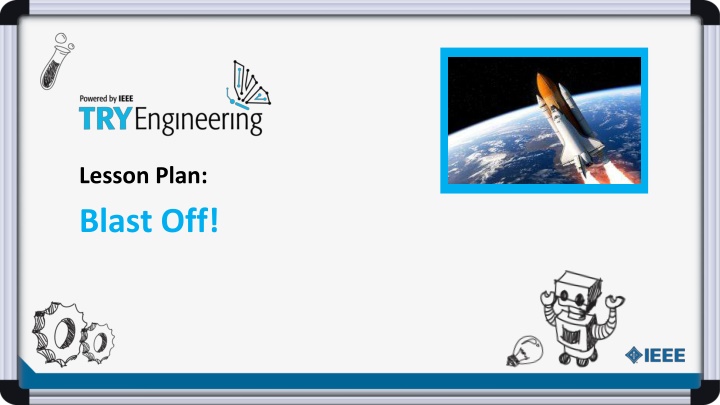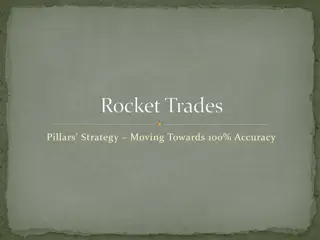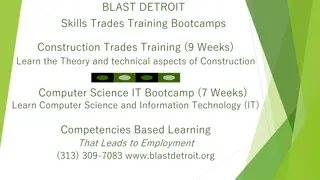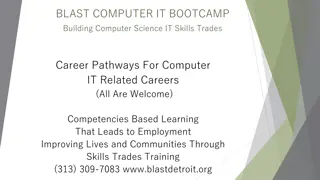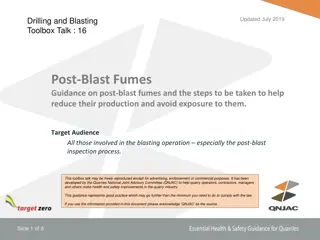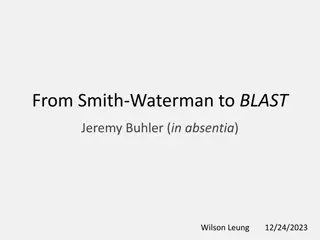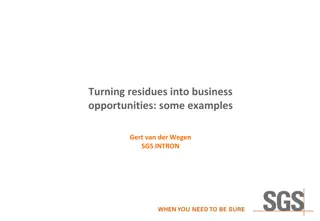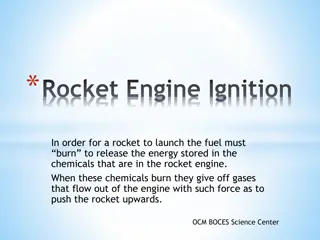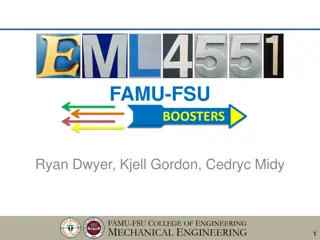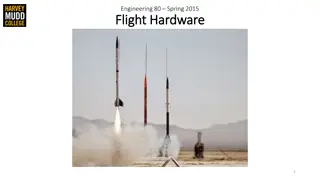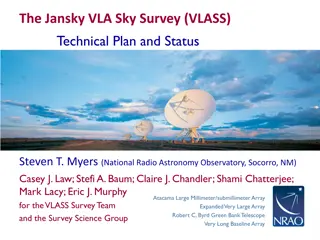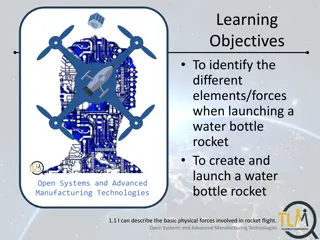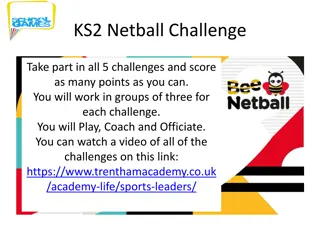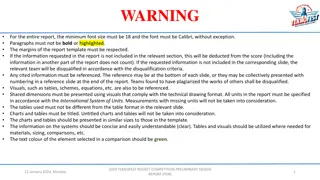Rocket Design Challenge: Blast Off to the Sky!
Engage in an exciting engineering challenge to design and build a model rocket that can soar the highest and straightest. Explore materials, safety considerations, and testing processes to achieve success in this hands-on activity. Get ready to launch your creativity and innovation to new heights!
Download Presentation

Please find below an Image/Link to download the presentation.
The content on the website is provided AS IS for your information and personal use only. It may not be sold, licensed, or shared on other websites without obtaining consent from the author.If you encounter any issues during the download, it is possible that the publisher has removed the file from their server.
You are allowed to download the files provided on this website for personal or commercial use, subject to the condition that they are used lawfully. All files are the property of their respective owners.
The content on the website is provided AS IS for your information and personal use only. It may not be sold, licensed, or shared on other websites without obtaining consent from the author.
E N D
Presentation Transcript
Lesson Plan: Blast Off!
The Design Challenge You are part of a team of engineers given the challenge of building a model rocket launcher and designing and building a rocket that can rise the highest and straightest compared with other student teams in your class. 3
Defining the Challenge: Criteria & Constraints Criteria Designed to rise the highest and straightest Constraints Use only the materials provided. 4
Material Materials Required Model Rocket Kit Estes (www.estesrockets.com) Model Rockets (www.modelrockets.co.uk) Local hobby shops Optional Materials Internet access to explore www.grc.nasa.gov/WWW/K-12/rocket/ for research and to use online rocket simulator 5
Safety Considerations Teachers and students should be aware that most commercially available rockets generate considerable heat. Great care should be exercised to follow the manufacturer s instructions closely. Students and the teacher in charge should read and follow the rocket manufacturer s instructions CAREFULLY. Teachers who have never supervised a rocket launch may want to team with a teacher who has for their first launch. Be sure to follow your school's safety policies. Launching should be done outdoors. 6
Safety Considerations Students and others who are not actively involved in launching the rocket should be kept at least 250 feet from the launch area. All members of the launch team should wear protective eye shields. Rockets of the type illustrated are ignited electrically by a pair of wires about 20 ft long. Launch team should stand behind a protective barrier. They could even sit inside a car, if necessary. Note that an alternative to rocket launch kits would be to use a foot pump and launch an air rocket (using an empty soda bottle or other container for the rocket). 7
Testing Materials and Process Testing Material Rocket launcher Rocket Safety goggles Protective barrier, if necessary Outdoor space and a nice day Testing Process Test the rockets by following the launching instructions on the rocket launcher kit paying close attention to the safety considerations. 8
Consider... Before you get started building, consider how you think a rocket can fly and how engineers have to consider payload, weather, and the shape and weight of a rocket when developing a new or re-engineered rocket design. Discuss how you ll work together to build your rocket launcher. You should estimate how high you believe your rocket will travel. You should think about what you can do in your design to ensure your rocket will go higher and straighter.
Reflection How did the height you estimated your rocket would reach compare with the actual estimated height? What do you think might have caused any differences in the height you achieved? Did your rocket launch straight up? If not, why do you think it veered off course? Do you think that this activity was more rewarding to do as a team, or would you have preferred to work alone on it? Why? Did you adjust your model rocket at all? How? Do you think this helped or hindered your results? 11
Reflection How do you think the rocket would have behaved differently if it were launched in a weightless atmosphere? What safety measures do you think engineers consider when launching a real rocket? Consider the location of most launch sites as part of your answer. When engineers are designing a rocket which will carry people in addition to cargo, how do you think the rocket will change in terms of structural design, functionality, and features? 12
Reflection Do you think rocket designs will change a great deal over the next ten years? How? What tradeoffs do engineers have to make when considering the space/weight of fuel vs. the weight of cargo? 13
The Engineering Design Process Engineering Design Process From brainstorming ideas to testing prototypes, iterating through the design process helps engineers to develop more creative products and processes. TeachEngineering has over 1,500 FREE lessons and activities. Visit https://www.teachengineering.org/ for more! Music: Italian Afternoon - Twin Musicom You re free to use this song in any of your videos, but you must include the following in your video description: Italian Afternoon by Twin Musicom is licensed under a Creative Commons Attribution license (https://creativecommons.org/licenses/by/4.0/) Artist: http://www.twinmusicom.org/ Learn about the engineering design process (EDP). The process engineers use to solve problems. (Video 1:47) Source: TeachEngineering YouTube Channel http://www.youtube.com/watch?v=b0ISWaNoz-c 15
Engineering Design Process Divide into teams Review the challenge and criteria & constraints Brainstorm possible solutions (sketch while you brainstorm!) Choose best solution and build a prototype Test then redesign until solution is optimized Reflect as a team and debrief as a class 16
Productive Failure The engineering design process involves productive failure: test, fail, redesign. Iterate again and again until you have the best possible solution. It is important to document iterations to keep track of each redesign. Use the engineering notebook to sketch ideas, document iterations and any measurement and/or calculations. It s also important to showcase the fact that there can be multiple solutions to the same problem. There s no one right solution.
Vocabulary Constraints: Limitations with material, time, size of team, etc. Criteria: Conditions that the design must satisfy like its overall size, etc. Engineers: Inventors and problem-solvers of the world. Twenty-five major specialties are recognized in engineering (see infographic). Engineering Design Process: Process engineers use to solve problems. Engineering Habits of Mind (EHM): Six unique ways that engineers think. Iteration: Test & redesign is one iteration. Repeat (multiple iterations). Payload: Amount of goods carried by a vehicle, aircraft or spacecraft 19
Vocabulary Prototype: A working model of the solution to be tested. Rocket: A flying device, shaped like a tube, that is driven by hot gases released from engines in its rear. 20
Dig Deeper into the Topic Internet Connections Timeline of Rocket History (http://history.msfc.nasa.gov/rocketry/) NASA Beginners Guide to Rockets (www.grc.nasa.gov/WWW/K- 12/rocket/bgmr.html) Virgin Galactic Human Space Flight (www.virgingalactic.com/human- spaceflight) NASA Parker Solar Probe (www.nasa.gov/content/goddard/parker- solar-probehumanity-s-first-visit-to-a-star) 22
Dig Deeper into the Topic Recommended Reading Make: Rockets: Down-to-Earth Rocket Science (ISBN: 978- 1457182921) Handbook of Model Rocketry (ISBN: 978-0471472421) "A Pictorial History of Rockets" (www.nasa.gov/pdf/153410main_Rockets_History.pdf) Writing Activity Write an essay or a paragraph describing an example of rockets might be used to help society in peaceful times. 23
What is Engineering? What is Engineering? What is engineering? What does it take to be an engineer? Do you need to be a math whiz? Aspiring engineers tackle these questions and help demystify their chosen profession. Learn about engineering and how engineers are creative problem solvers and innovators who work to make the world a better place. (Video 3:43) Source: TeachEngineering YouTube Channel - http://www.youtube.com/watch?v=H9VDkvgGmVo 25
Related Engineering Fields There are several types of engineering fields that are involved with rockets and aerospace. Here are just some of the related engineering fields. Aerospace engineering Mechanical Engineering Electrical Engineering Download the Engineering Fields Infographic How will YOU change the world? 26
Engineering Habits of Mind Engineering Habits of Mind (EHM) is about how engineers think everyday. The Core Engineering Mind is about making things that work and making them work better. Source: https://online-journals.org/index.php/i- jep/article/view/5366)
Engineering Habits of Mind Checklist Systems thinking Problem-finding Visualising Improving Creative problem-solving Adapting
Learning Habits of Mind Checklist Open-mindedness Resilience Resourcefulness Collaboration Reflection Ethical Consideration Curiosity
Greatest Engineering Achievements of the 20th Century Source: http://www.greatachievements.org/
Learn more about how engineers make the world a better place 31
For more engineering lesson plans and resources like games, engineering careers, and STEM opportunities visit IEEE s TryEngineering.org
